Back in 2020, Hungarian innovators HEXMAT turned the platter mat market on its head with the truly unique Yellow Bird record isolator. The new Eclipse model promises further improvements on the initial concept. Can it deliver? Sound Matters put the HEXMAT Eclipse through its paces.
Platter mats are often overlooked in the turntable accessory market. After all, why would a new material placed on your platter make any difference to the overall sound quality compared with, say, a cartridge upgrade or even a completely new turntable?
It’s true that a cartridge upgrade, for example, will likely produce a more pronounced improvement in the sound quality of your vinyl records. However, it’s important to remember that the process of playing records is mechanical, and that means every aspect of your turntable can affect the sound. Often the differences are subtle, but that doesn’t make them insignificant—particularly if we’re looking to squeeze the best possible performance from our gear.
For this reason, platter mats certainly shouldn’t be disregarded. Each design and material possesses different sonic qualities and performance benefits.
Most platter mats focus on dampening and controlling resonance by coupling the record to the platter or mat as closely as possible. The HEXMAT designs work on the opposite theory. The original Yellow Bird brought the record contact surface area close to zero. (Just 1-2 square millimeters, to be exact).
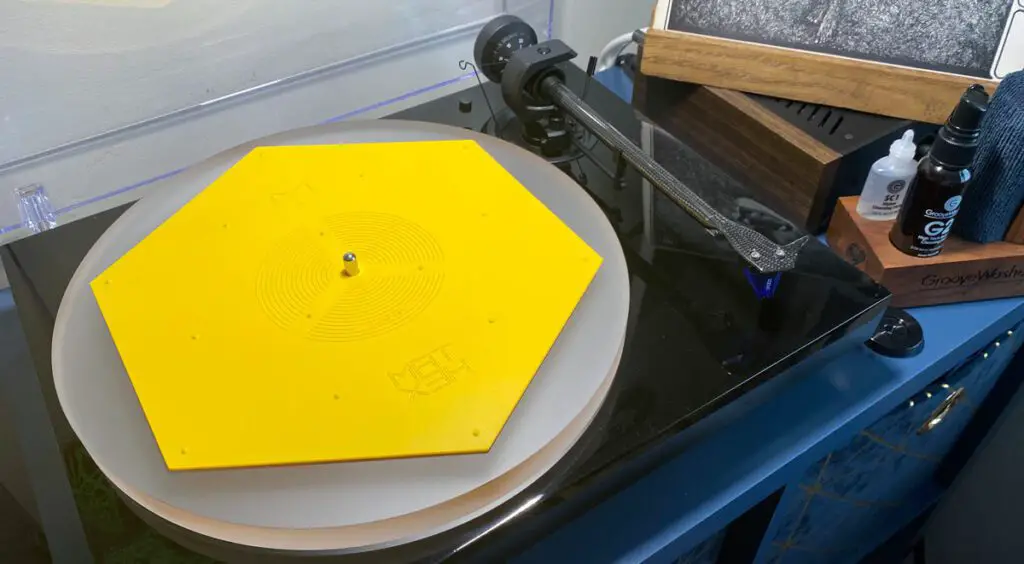
For those readers new to HEXMAT, the original concept was developed by the Hungarian sound engineer Zsolt Fajt who devised the idea through a combination of passion for vinyl and his knowledge of studio recording and mixing.
The original Yellow Bird was three years in the making and involved Fajt developing more than 100 prototypes made from various materials. Check out our Yellow Bird review for the full story.
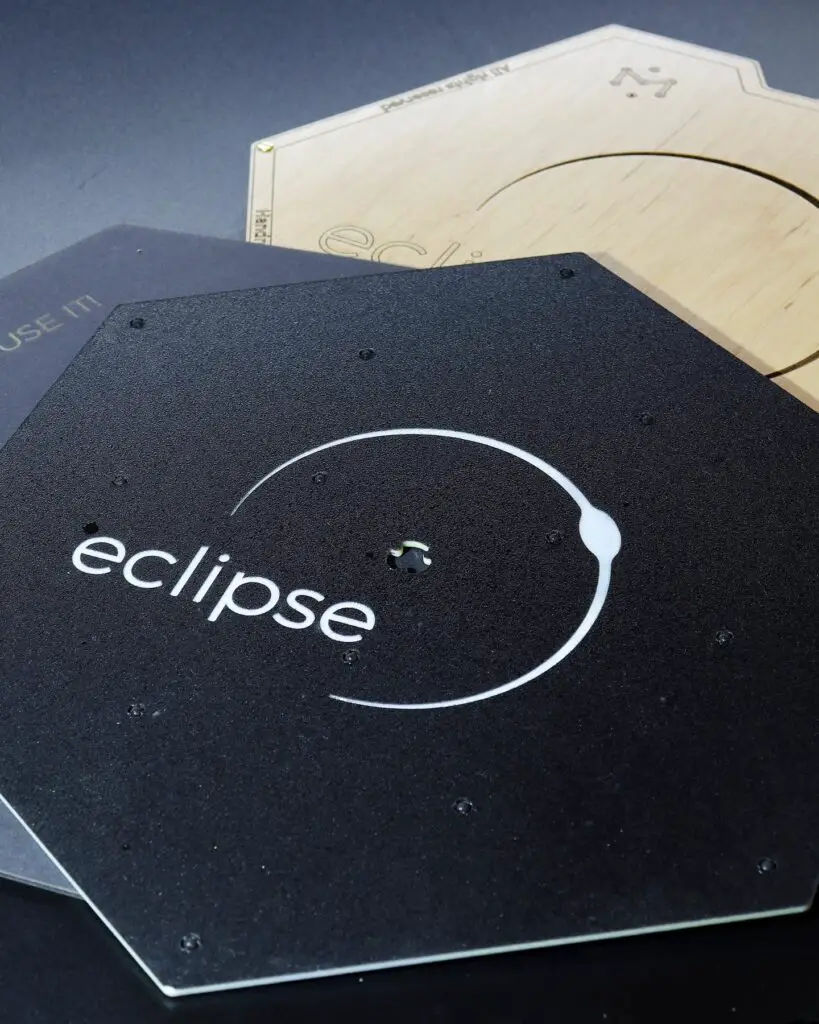
HEXMAT Eclipse In Review
The new Eclipse design seeks to improve on the initial Yellow Bird concept.
According to HEXMAT, the surface area is reduced further thanks to the “specially embedded spheres”. You can see below that compared with the original design, the raised contact points have less contact with the main body.
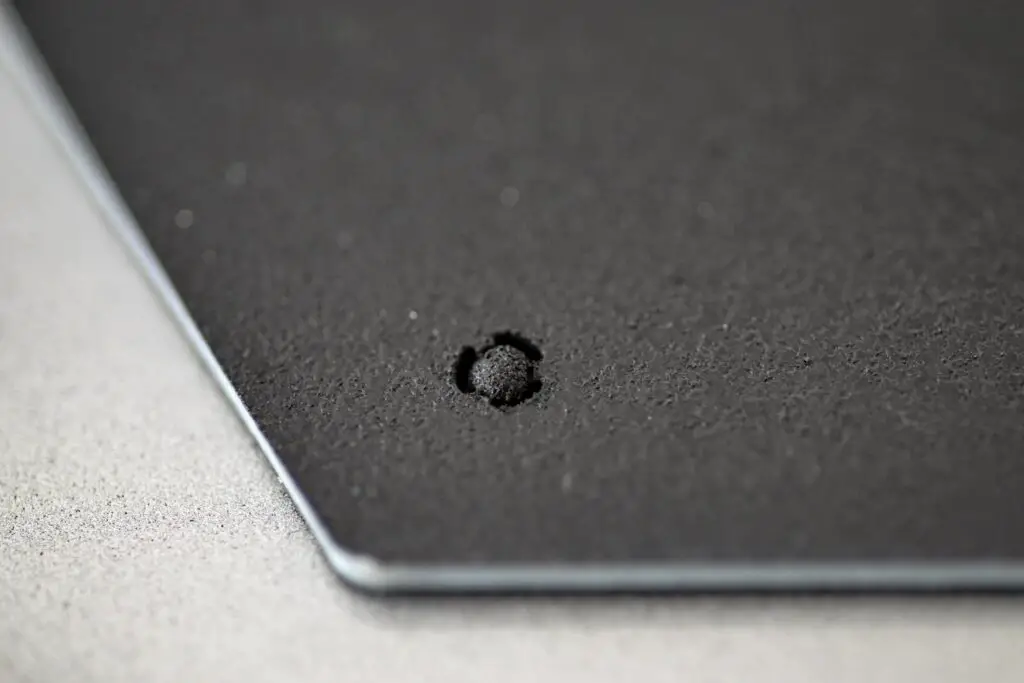
Each raised contact point is hand-finished by the designer, Zsolt Fajt himself to ensure high-quality control.
The main body is a 2mm thick polymer that feels significantly more rigid than the original Yellow Bird. Despite this, both mats are 3mm thick in overall size, meaning you can easily upgrade from the YellowBird to the Eclipse without adjusting the VTA (vertical tracking angle) of your turntable.
Adjusting the VTA is Essential
At this point in the review, it is important to note that any additional layer on your turntable platter will raise the height of your cartridge and change the tracking angle.
A change of 3mm should be compensated for by raising your tonearm tracking angle by the same measurement. If your turntable does not have the ability to adjust VTA, then I do not recommend investing in a HEXMAT.
Full Torque Transfer
One aspect I’ve always admired about the HEXMAT designs is how well they grip the platter. Compared with its direct competitors, both HEXMAT designs naturally grip the platter. Other less grippy designs, are prone to slipping on some platters without the addition of double-sided adhesive discs (as provided with an Achromat, for example).
The HEXMAT also applies the same (gentle) grip between the HEXMAT and the record, which means the HEXMAT Eclipse and the Yellow Bird can claim full torque transfer from the rotating platter. In short, the benefit here is less potential for wow and flutter.
HEXMAT Eclipse vs Yellow Bird
In my experience, all platter mats offer an incremental and subtle improvement in performance instead of a revolutionary change. The HEXMAT Eclipse is said to improve further still on the already impressive performance of Yellow Bird—particularly in the area of stereo image and channel separation.
For me though, the most noticeable improvement was a further lowering of the noise floor. This makes sense as the contact surface area is further reduced, allowing less chance for unwanted mechanical or vibration noises to enter the signal chain.
This subtle improvement (and I must stress that it is subtle) made it easier to pick out fine details from a recording. In this sense, the Eclipse succeeds the Yellow Bird in performance. In addition, the thicker, rigid design gives the product a more premium feel than its flexible forebear.
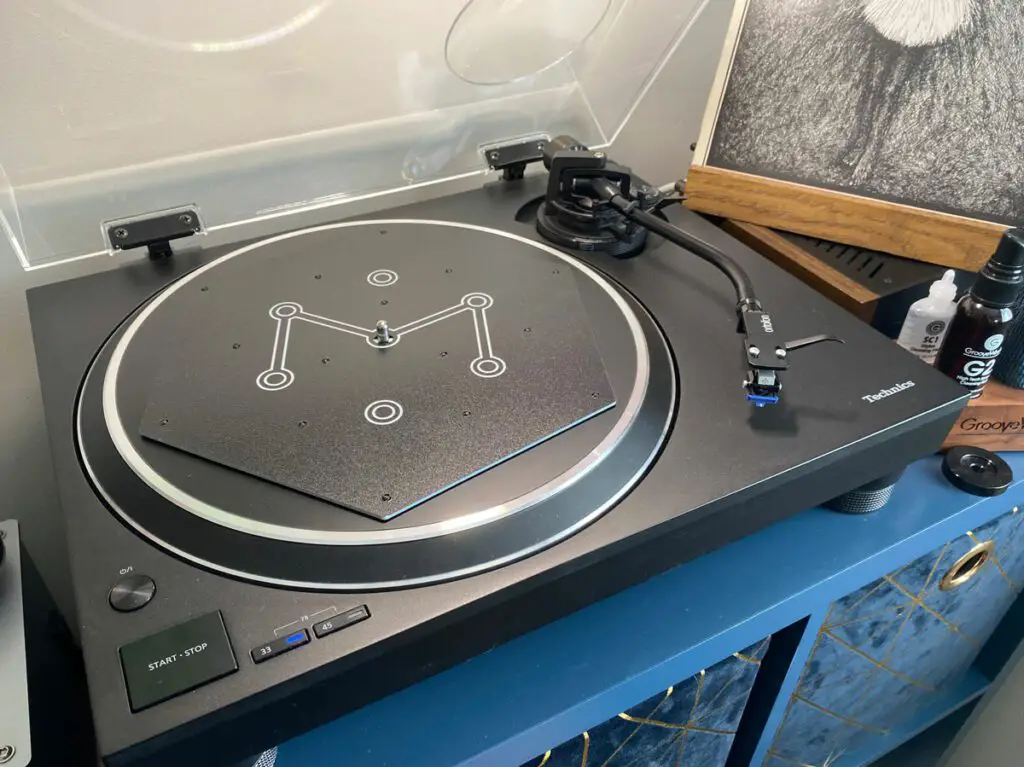
HEXMAT Eclipse Listening Test
I selected several records for the listening test, including a couple of AAA re-issues cut from the original master tapes. These included The Meters ‘Rejuvenation’, and Teddy Pendergrass ‘Life is a Song Worth Singing’. (Both are recent VMP releases cut by Ryan Smith at Sterling Sound).
In addition, I also span an old copy of the first Santana album, alongside The Counting Crows ‘August & Everything After’ and Radiohead’s ‘Kid A’.
I ran these listening tests across both of my turntables (a Pro-Ject X1 and a Technics SL1500).
I’m not a huge fan of flowery language to describe listening tests, but I did note several general improvements in clarity across the frequency spectrum. As a general rule, the mid-range became clearer and more focused, giving an improved sense of instrument separation. Much of this I put down to the lower noise floor. Similar to the Funk Firm Achromat and the SoundDeck alternatives, everything just tightens up a little.
The improvement was more noticeable on the Technics deck as the X1 has an acrylic platter, whereas the SL1500 has a metal platter that I had fitted with a humble cork mat.
It made sense to me that moving from acrylic to the HEXMAT Eclipse would represent a more subtle upgrade as acrylic already possesses excellent damping and resonance controls compared with a metal platter and cork combo.
HEXMAT Eclipse Review: The Bottom Line
The Eclipse undoubtedly exceeds the Yellow Bird in design and sound quality, and in the world of platter mats, it’s up there with the best.
Admittedly, the price point is high and could prove a sticking point for most day-to-day record collectors. It’s over double the cost of its nearest competitors, but given the handmade design, and the clever full grip design, I’d argue it’s a cut above the rest.
The Eclipse would suit record collectors that are happy with their chosen setup but want to squeeze the best possible performance out of their gear. It’s a subtle improvement, but for many collectors (particularly those with far more impressive and expensive equipment than myself), the price is easily justified as the final icing on the cake.
hexmat.net






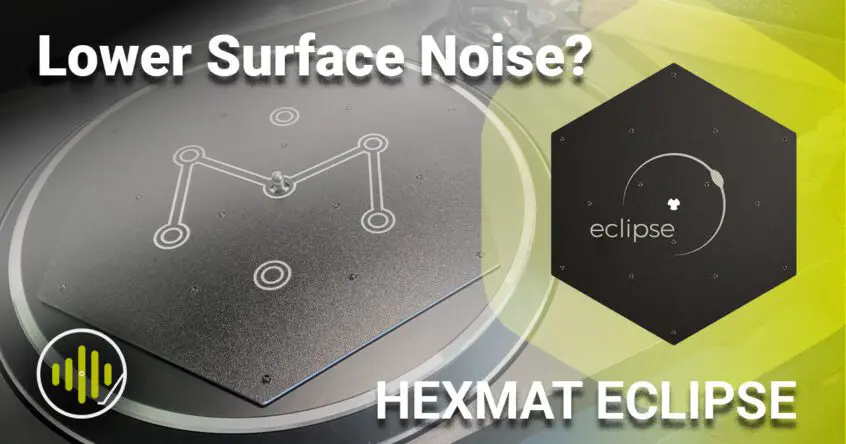


I’m no expert in this whatsoever, I have a vintage Rotel RP1000 turntable that back in the day came with a rubber mat, I changed that mat to cork and it seemed to sound a tad better, but not startling better, but good enough I left it on. Then about 5 years ago I went with an acrylic platter, there was another improvement in the sound, most notably in the base, it came across as more accurate and better sounding, and there was a slightly richer tone to the sound overall, and I got zero static unlike with the cork and especially the rubber mat which in turn lesson cracks and pops. I’m not sure if switching to the Hexmat would make any improvement over the Acrylic mat I have, and for the cost, I’m not sure if I want to risk it and be disappointed.
Hi, just considering a Hexmat for a Rega P3 which doesn’t have a adjustable VTA. Since the felt mat is around 2mm would one more mm be a deal breaker?
Hi, I have been using the Nad Thick Platter Mat on my Luxman for about 40 odd years.
It is stylus rake angle {sra} that matters,try setting it to 92 degrees with a usb microscope.It will never be perfect of course as different mastering labs cut their lacquers {acetate}at different angles. No one will set each record to be played individually to achieve the lowest inter modulation distortion numbers. With vinyl playback settings a compromise is always in play, there is no getting around it.